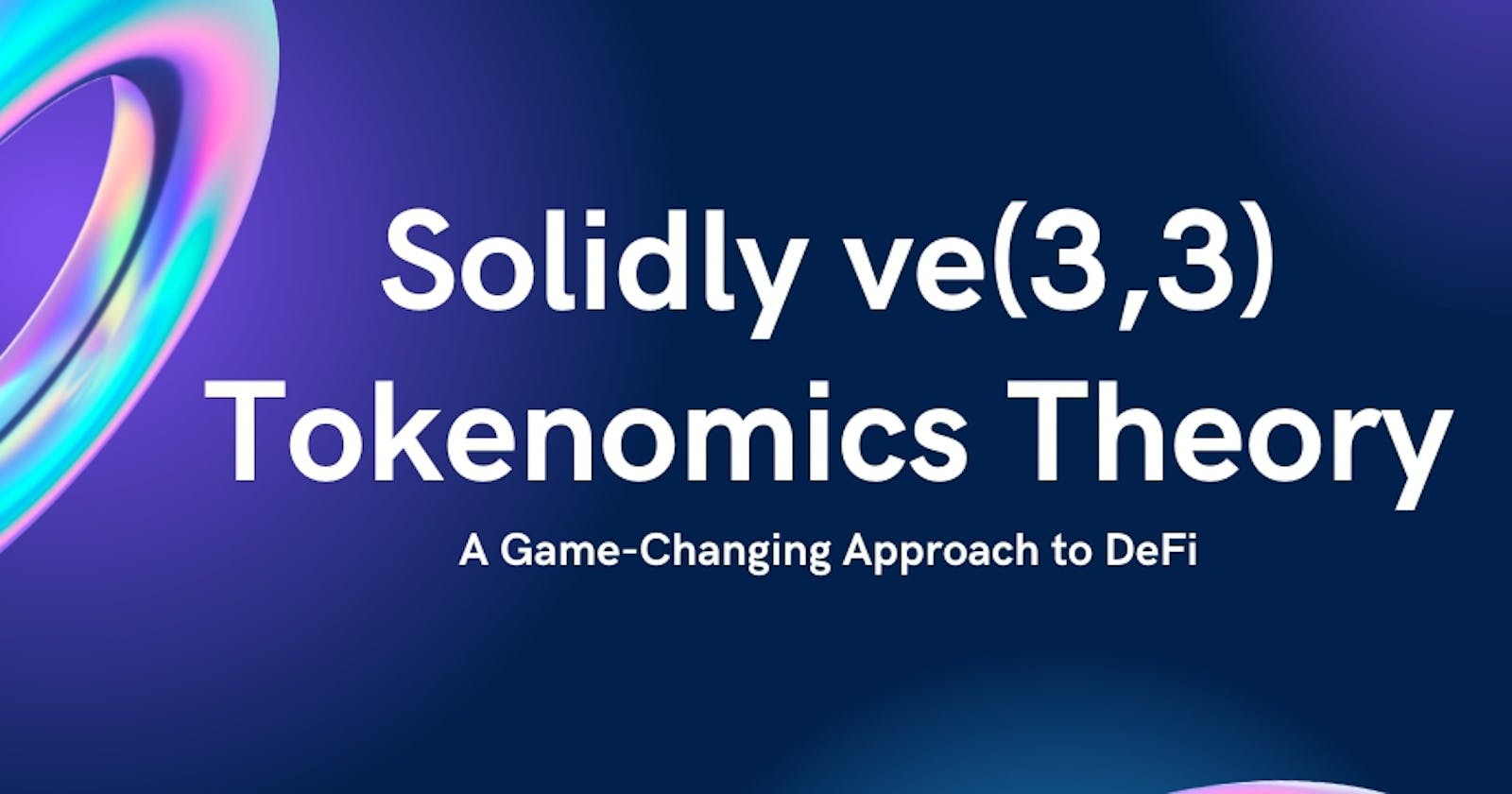Decentralized finance (DeFi) has grown rapidly in recent years, but it has also faced some challenges. One of the biggest challenges is liquidity. DeFi protocols need liquidity in order to function properly, but it can be difficult to attract and retain liquidity providers.
ve(3,3) is a tokenomics model that was first introduced by Andre Cronje, the creator of the Solidly exchange. The ve(3,3) tokenomics model is a new approach to DeFi that is designed to address the liquidity challenge. ve(3,3) is a combination of the (3,3) game theory model from Olympus DAO and the ve tokenomics model from Curve Finance.
Note: ve stands for "voting escrow." This means that users who stake their tokens are given ve tokens, which they can use to vote on protocol decisions. The more ve tokens a user has, the more weight their vote carries.
(3,3) refers to the game theory principle that the best outcome for everyone involved occurs when everyone stakes their tokens. This is because when tokens are staked, they are removed from circulation, which increases the value of the remaining tokens.
The (3,3) game theory model is based on the idea that the best outcome for everyone is when everyone stakes their tokens. This is because when tokens are staked, they are taken out of circulation and the price of the token increases. Additionally, stakers earn rewards for staking their tokens, which further incentivizes them to do so.
The ve tokenomics model is based on the idea that users who lock their tokens for a longer period of time should receive more benefits. This is because locked tokens are less likely to be sold, which helps to reduce volatility and increase the price of the token. Additionally, locked tokens can be used to vote on protocol decisions, which gives holders more control over the project.
The ve(3,3) model in Solidly is designed to encourage users to stake their tokens and to participate in the protocol's governance. By doing so, users can help to ensure the long-term success of the project and earn rewards for their participation.
How does ve(3,3) work in Solidly?

In Solidly, users who stake their tokens will receive veTokens. The amount of veTokens that a user receives is proportional to the amount of tokens that they stake. veTokens can then be used to vote on protocol decisions and to earn trading fees from the pools that they vote for.
The ve(3,3) model in Solidly is designed to work in a cyclical way. When users stake their tokens, they receive veTokens. These veTokens can then be used to vote on protocol decisions. The more veTokens a user has, the more weight their vote will have.
When users vote on protocol decisions, they can choose to vote for pools that they believe will generate the most trading fees. The pools that receive the most votes will receive a larger share of the trading fees. These trading fees will then be distributed to the users who staked their tokens and voted for the pools.
This cyclical system incentivizes users to stake their tokens, vote on protocol decisions, and provide liquidity to the protocol. By doing so, users can help to ensure the long-term success of the project and earn rewards for their participation.
What are the benefits of ve(3,3)?
There are a number of benefits to using the ve(3,3) tokenomics model. These include:
Increased liquidity: When users stake their tokens, they are effectively locking them up and taking them out of circulation. This reduces the supply of tokens and can help to increase the price of the token.
Reduced volatility: When there is less volatility in the price of a token, it is more attractive to investors. This can lead to increased demand for the token and further increase its price.
Improved governance: By locking their tokens, users can earn veTokens that can be used to vote on protocol decisions. This gives users more control over the project and helps to ensure that it is managed in a way that is beneficial to everyone.
Increased rewards: Users who stake their tokens and vote on protocol decisions can earn rewards in the form of trading fees. This provides an additional incentive for users to participate in the protocol and helps to ensure its long-term success.
Conclusion
The ve(3,3) tokenomics model is a powerful tool that can be used to improve the performance of decentralized exchanges. By encouraging users to stake their tokens and participate in the protocol's governance, ve(3,3) can help to increase liquidity, reduce volatility, improve governance, and increase rewards. As a result, ve(3,3) has the potential to revolutionize the DeFi landscape and make decentralized exchanges more accessible and user-friendly.
